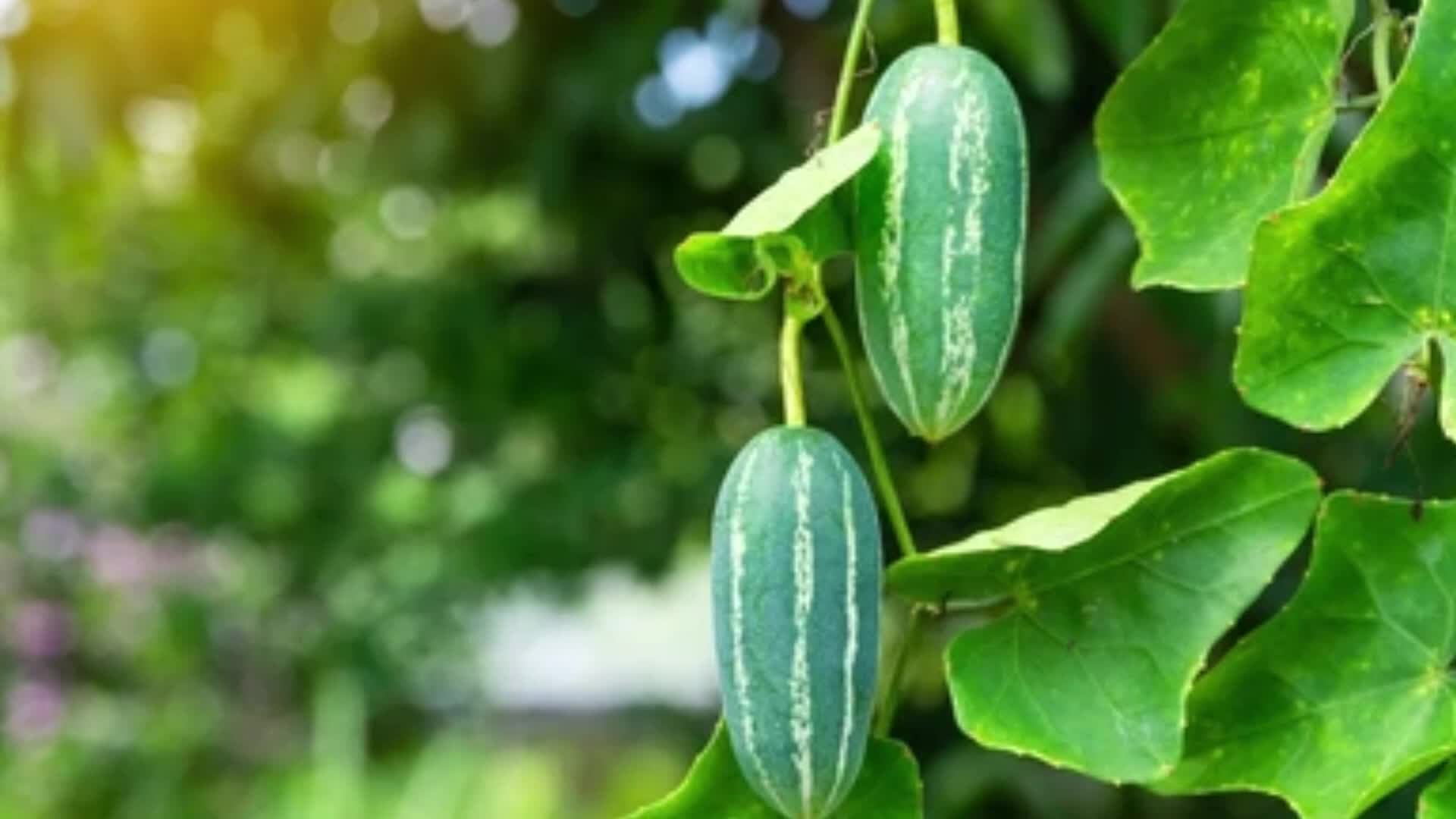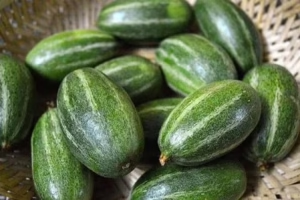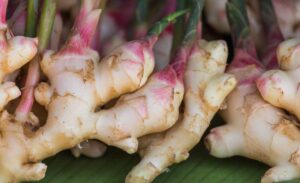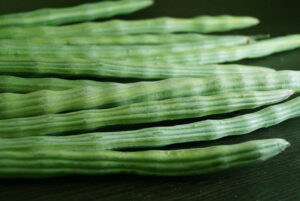How to Grow and Use Ivy Gourd: A Complete Guide for Home Gardeners
Are you looking to add an unusual and versatile vegetable to your garden? Ivy gourd (Coccinia grandis), also known as scarlet gourd or tindora, might be just what you need. This tropical climbing vine produces small, cucumber-like fruits that are packed with nutrients and widely used in Asian cuisines. Whether you have a spacious garden, a small balcony, or just a sunny windowsill, you can successfully grow ivy gourd at home. This guide will walk you through everything you need to know about growing and using this versatile plant.
What is Ivy Gourd?
Ivy gourd is a perennial climbing vine native to Africa and Asia. It belongs to the Cucurbitaceae family, making it a cousin to cucumbers, melons, and squashes. The plant is known for its rapid growth, heart-shaped leaves, and small green fruits that turn bright red when fully ripe. While it’s a popular vegetable in countries like India, Thailand, and the Philippines, ivy gourd is gradually gaining recognition in the United States for its culinary uses and potential health benefits.
According to the USDA Agricultural Research Service, ivy gourd is rich in vitamins A and C, protein, and fiber. It’s also valued in traditional medicine for its potential antidiabetic properties.
Growing Conditions for Ivy Gourd
Before you start growing ivy gourd, it’s important to understand its preferred growing conditions:
Climate Requirements
Ivy gourd thrives in warm, tropical environments. In the US, it grows best in USDA hardiness zones 9-11, which include states like Florida, California, Texas, and Hawaii. If you live in a cooler region, don’t worry—you can still grow ivy gourd indoors or as an annual summer plant.
Sunlight and Temperature
- Sunlight: Full sun to partial shade (at least 6 hours of direct sunlight daily)
- Temperature: 65°F to 95°F (18°C to 35°C)
- Frost tolerance: None—protect from temperatures below 50°F (10°C)
Soil and Water Requirements
- Soil type: Well-draining, fertile loam with high organic content
- Soil pH: 5.5 to 7.5 (slightly acidic to neutral)
- Watering: Regular watering to keep soil consistently moist but not waterlogged
How to Grow Ivy Gourd from Seeds
Starting ivy gourd from seeds is economical and rewarding. Here’s a step-by-step guide to help you through the process:

Seed Preparation
- Source your seeds: Purchase seeds from a reputable supplier or harvest them from ripe ivy gourd fruits.
- Seed treatment: Soak the seeds in warm water for 24 hours before planting to enhance germination.
Sowing Seeds
- Timing: Sow seeds in early spring after all danger of frost has passed.
- Planting depth: Plant seeds about ½ inch deep in seed-starting mix.
- Container choice: Use individual pots or seed trays with drainage holes.
- Spacing: Place seeds 2-3 inches apart if using a seed tray.
Germination and Early Care
- Temperature: Maintain a warm environment (around 75°F or 24°C).
- Moisture: Keep the soil consistently moist using a spray bottle.
- Time to germination: Expect seedlings to emerge within 7-14 days.
- Transplanting: Once seedlings develop 2-3 true leaves, transplant them to larger containers.
Growing Ivy Gourd in Pots
Container gardening is an excellent option for ivy gourd, especially if you have limited space or live in a cooler climate. Here’s how to successfully grow ivy gourd in pots:
Pot Selection
- Size: Choose a container at least 12-15 inches deep and 12 inches in diameter.
- Material: Terracotta, plastic, or fabric pots all work well—ensure they have drainage holes.
Potting Mix
Create a rich potting mix by combining:
- 40% garden soil
- 30% compost or well-rotted manure
- 20% coarse sand or perlite
- 10% coco peat or peat moss
Planting and Maintenance
- Planting: Transfer seedlings or cuttings to the pot, burying them at the same depth they were previously growing.
- Support: Place a trellis or stake in the pot for the vine to climb.
- Watering: Water thoroughly when the top inch of soil feels dry.
- Fertilization: Feed with a balanced liquid fertilizer every 2-3 weeks during the growing season.
Indoor Growing Tips
If you’re growing ivy gourd indoors:
- Light: Place near a south-facing window or use grow lights to provide 12-14 hours of light daily.
- Humidity: Maintain humidity levels above 50% using a humidifier or pebble tray.
- Air circulation: Ensure good air movement to prevent fungal issues.
- Pollination: Hand-pollinate flowers using a small brush to transfer pollen between male and female flowers.
Growth Stages and Care Schedule
Understanding the growth stages of ivy gourd helps you provide appropriate care throughout its lifecycle:
| Growth Stage | Weeks After Planting | Plant Characteristics | Care Requirements |
|---|---|---|---|
| Seedling | 1-3 | Small plants with 2-4 leaves | Keep soil consistently moist; provide partial shade |
| Vegetative | 4-8 | Rapid vine growth; development of tendrils | Begin trellising; increase watering; start regular fertilization |
| Flowering | 9-12 | White star-shaped flowers appear | Ensure adequate water and nutrients; hand-pollinate if needed |
| Fruiting | 13-16+ | Small green fruits develop | Maintain consistent watering; support heavy fruit-bearing vines |
| Harvesting | 16-20+ | Fruits reach 2-3 inches in length | Harvest regularly to encourage continued production |
Common Pests and Diseases
While ivy gourd is relatively hardy, it can face certain challenges:
Pests
- Aphids: Small, sap-sucking insects that cluster on new growth
- Spider mites: Tiny pests that cause stippling on leaves and produce fine webbing
- Cucumber beetles: Striped or spotted beetles that feed on leaves and can spread diseases
Control methods: Spray plants with a strong jet of water, apply insecticidal soap, or introduce beneficial insects like ladybugs.
Diseases
- Powdery mildew: White powdery growth on leaves
- Downy mildew: Yellow spots on upper leaf surfaces with fuzzy growth underneath
- Root rot: Wilting and yellowing caused by overwatering or poor drainage
Prevention: Ensure good air circulation, avoid overhead watering, and maintain proper spacing between plants.
Harvesting Ivy Gourd
Knowing when and how to harvest ivy gourd ensures the best flavor and continued production:
When to Harvest
- Harvest fruits when they’re 2-3 inches long and bright green
- Pick fruits while still immature—before they turn red (unless harvesting for seeds)
- The ideal harvesting window is usually 4-5 days after the fruit forms
Harvesting Technique
- Use scissors or pruning shears to cut the fruit with a small portion of the stem attached
- Harvest in the morning when the fruits are at their freshest
- Pick fruits regularly (every 2-3 days) to encourage new flower and fruit production
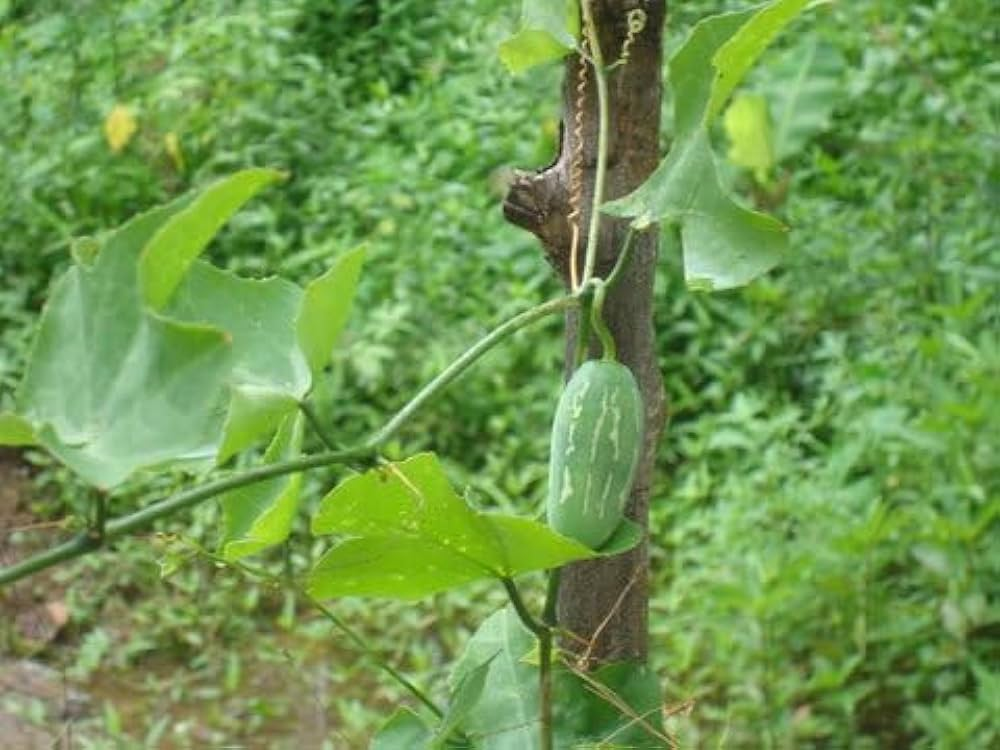
Using Ivy Gourd in the Kitchen
Ivy gourd is a versatile vegetable that can be prepared in numerous ways:
Culinary Uses
- Stir-fries: Quick-cooked with spices and other vegetables
- Curries: Simmered in coconut or tomato-based sauces
- Pickles: Preserved in vinegar or brine with spices
- Chips: Thinly sliced and deep-fried for a crispy snack
- Stuffed: Hollowed and filled with spiced mixtures
Basic Preparation
- Wash fruits thoroughly under running water
- Trim off both ends
- Use whole, sliced, or diced depending on the recipe
- Cook using your preferred method—sautéing, steaming, stir-frying, or roasting
Nutritional Benefits
Ivy gourd is not just tasty but also nutritious. According to the CDC Nutrition Division, incorporating a variety of vegetables like ivy gourd into your diet contributes to overall health and may help reduce the risk of certain chronic diseases. Ivy gourd is particularly noted for:
- High vitamin A content for eye health
- Good source of vitamin C for immune support
- Dietary fiber for digestive health
- Low calorie content—suitable for weight management diets
Propagating Ivy Gourd from Cuttings
If you don’t want to start from seeds, propagating ivy gourd from cuttings is an efficient alternative:
Selecting Cuttings
- Choose healthy, disease-free vines from a mature plant
- Cut 8-10 inch sections that include at least 3-4 nodes
- Remove leaves from the lower half of the cutting
Rooting Process
- Dip the cut end in rooting hormone (optional but helpful)
- Plant in a well-draining potting mix, burying 2-3 nodes
- Keep soil consistently moist and place in bright, indirect light
- Roots typically develop within 2-3 weeks
- Once well-rooted, transplant to a permanent container or garden location
Growing Ivy Gourd in Different US Regions
Ivy gourd’s growing requirements can be adapted to different US climates:
Southern States (Zones 9-11)
- Florida, Southern California, Texas, Hawaii: Grow outdoors year-round
- Planting time: Early spring or fall
- Special considerations: Provide afternoon shade in the hottest months; may become invasive in these regions—check local regulations
Temperate Regions (Zones 7-8)
- Mid-Atlantic, parts of the Pacific Northwest: Grow as an annual or bring containers indoors for winter
- Planting time: Late spring after all frost danger has passed
- Overwintering: Cut back vines and move containers to a protected location when temperatures drop below 50°F (10°C)
Northern States (Zones 3-6)
- Northeast, Midwest, Mountain regions: Grow indoors or in greenhouses
- Growing season: Start seeds indoors 8-10 weeks before last frost
- Indoor options: Grow near south-facing windows or under grow lights
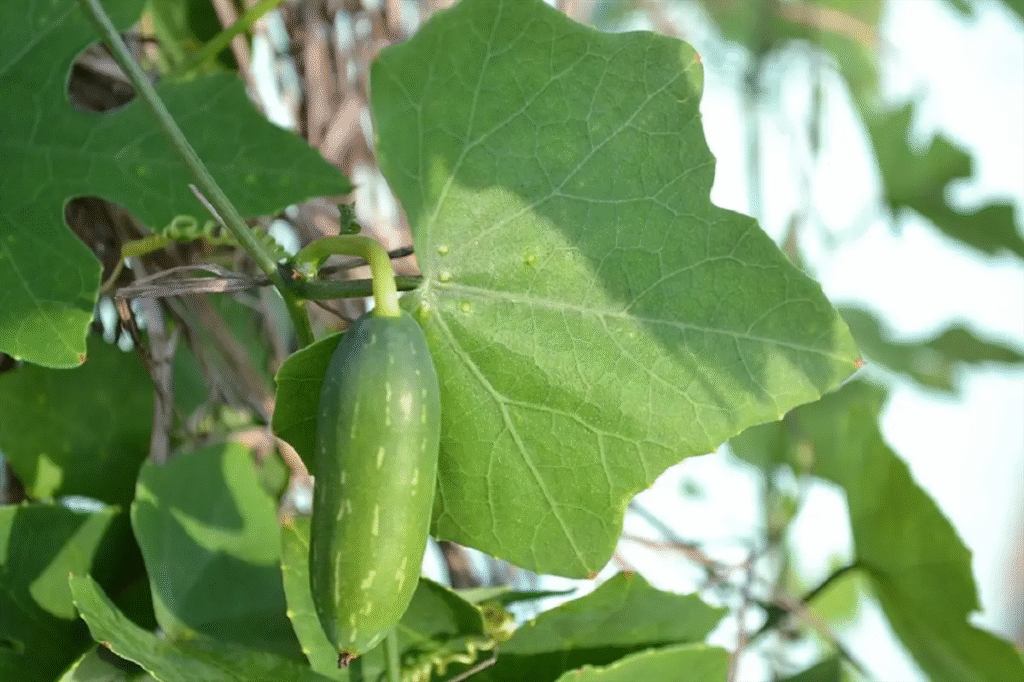
Marketing and Selling Ivy Gourd in the US
If you’re interested in growing ivy gourd commercially, consider these market opportunities:
Potential Markets
- Specialty ethnic grocers: Focus on areas with South Asian, Southeast Asian, or African communities
- Farmers’ markets: Introduce this unique vegetable to adventurous food enthusiasts
- Restaurant supply: Connect with chefs specializing in Asian or fusion cuisines
- CSA programs: Include ivy gourd as an exotic option in community-supported agriculture boxes
Marketing Tips
- Education: Provide recipe cards and cooking instructions
- Sampling: Offer taste tests of prepared ivy gourd dishes
- Storytelling: Share the cultural significance and health benefits
- Certification: Consider organic certification to access premium markets
Conclusion
Growing ivy gourd can be a rewarding experience whether you’re looking to add diversity to your home garden, connect with your cultural roots, or explore new culinary frontiers. With the right growing conditions and care, this versatile vine can thrive in many parts of the US, either outdoors or as an indoor plant. From its nutrient-rich fruits to its ornamental value, ivy gourd offers multiple benefits for the home gardener.
By following the guidelines in this comprehensive guide, you’ll be well-equipped to grow, harvest, and enjoy this tropical treasure. So why not give ivy gourd a try? Your garden—and your taste buds—will thank you.
